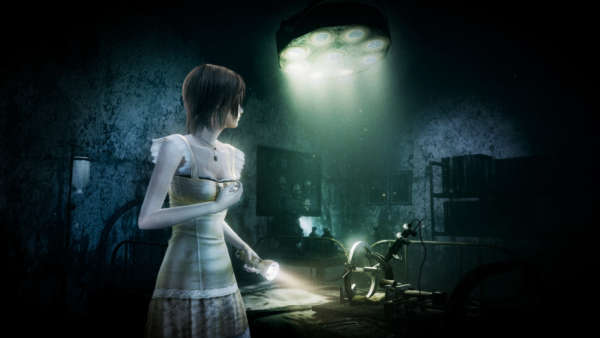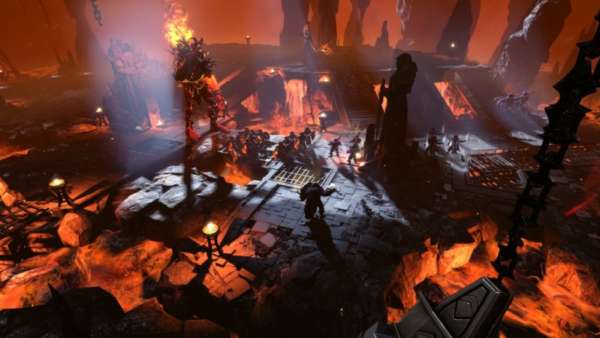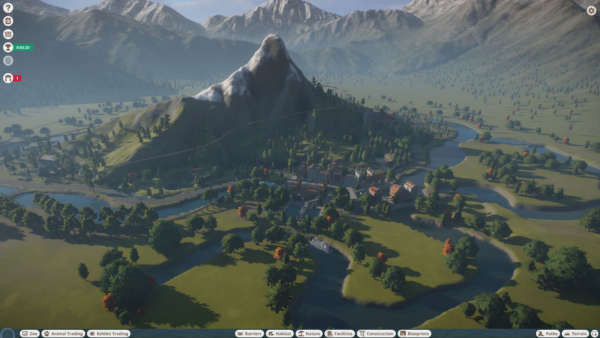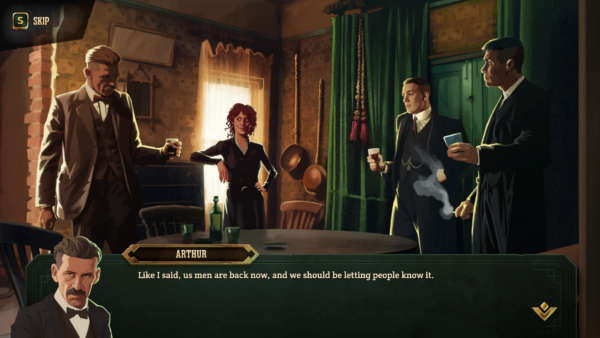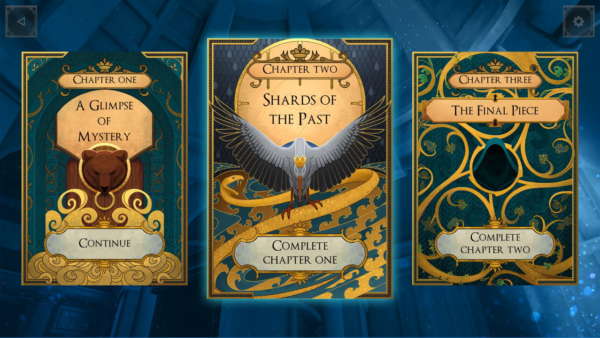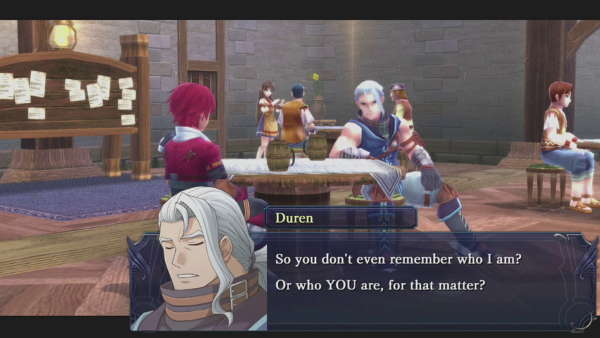FTL: Faster Than Light is a charming Kickstarter-funded indie title which has taken the industry by storm and has been catapulted into the pantheon of great indie success stories. But how does the game measure up?
FTL is based on a style of RPG gameplay known as Roguelikes. A Roguelike game is simple – you play through a randomly generated set of scenarios getting as far as you can, trying to reach the end. Sounds simple enough, right? There’s a catch – death is permanent.
FTL is no exception. If you die, the game is over. Start a new game, new ship, new crew, and start again. It’s this “hardcore” aspect that won over many gamers, leading to one of the most successful Kickstarter campaigns ever.
The premise is simple: your ship, which is capable of faster-than-light travel, carries vital information for The Federation. This is while the Rebels are your rival faction to contend with as they chase you through the system in search for that intel. You simply bring up your map and “jump” to one of several different available locations; eventually making it through the current Sector all the way to the game’s ending.
One of the first things that hits you when start is Ben Prunty’s fantastic soundtrack. When the haunting but contemplative melody of the first level’s theme begins you want to explore the whole galaxy. The simple, almost-chiptune aesthetic of the music will appeal to any gamer, and perfectly accompanies the game, changing mood and tempo depending on your ship’s state.
Being an indie game, the graphics are very quaint. FTL is exclusively 2D, with pixel art and simple sprite animations on your ship and crew. This adds to a retro-feel which lends the game a certain kind of charm, but it can also be a bit finicky to click on a specific part of the ship (e.g. a door) because it is so small and only made up of a few pixels.
Once you have your ship – which you can name, along with its crew – you start off in Sector 1, with the Rebel fleet hot on your tail. From there, the game is all left to the randomly generated scenarios between you and the next sector. FTL works on a simple flow – you arrive at a location and deal with any scenarios that may occur, including ship battles, until you can jump again. It’s all procedurally generated, which means that no two playthroughs will ever be the same. Of course this is all very exciting but it can also lead to some frustration.
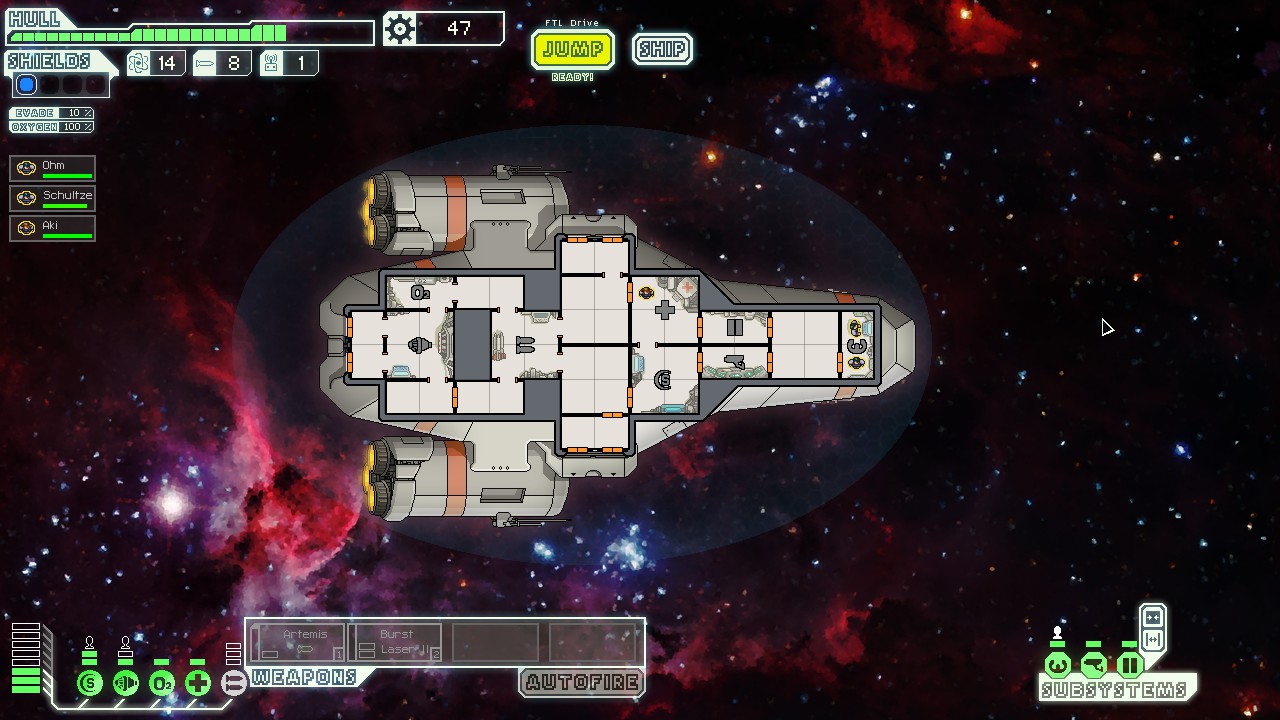
A minimal art style adds to the retro aesthetic
If this sounds daunting, it’s because it is. With perma-death a very real possibility and each jump heading into the unknown, you might be on the edge of your seat. You also might be utterly terrified. The game succeeds brilliantly in capturing a sense of dread, as well as feelings of exploration and discovery. Assuming you can make it past Sector 1, there are new unlockable ships, crew members and many shops which will sell you wares to bulk up your ship’s offensive options. You can acquire new crew members with different races and attributes, level up your crew’s skills, and upgrade your ship. Almost everything about your ship is upgradeable in some way, and by the final Sector you’ll have – hopefully – created the scourge of the Rebel fleet – assuming you haven’t been vaporised by aliens.
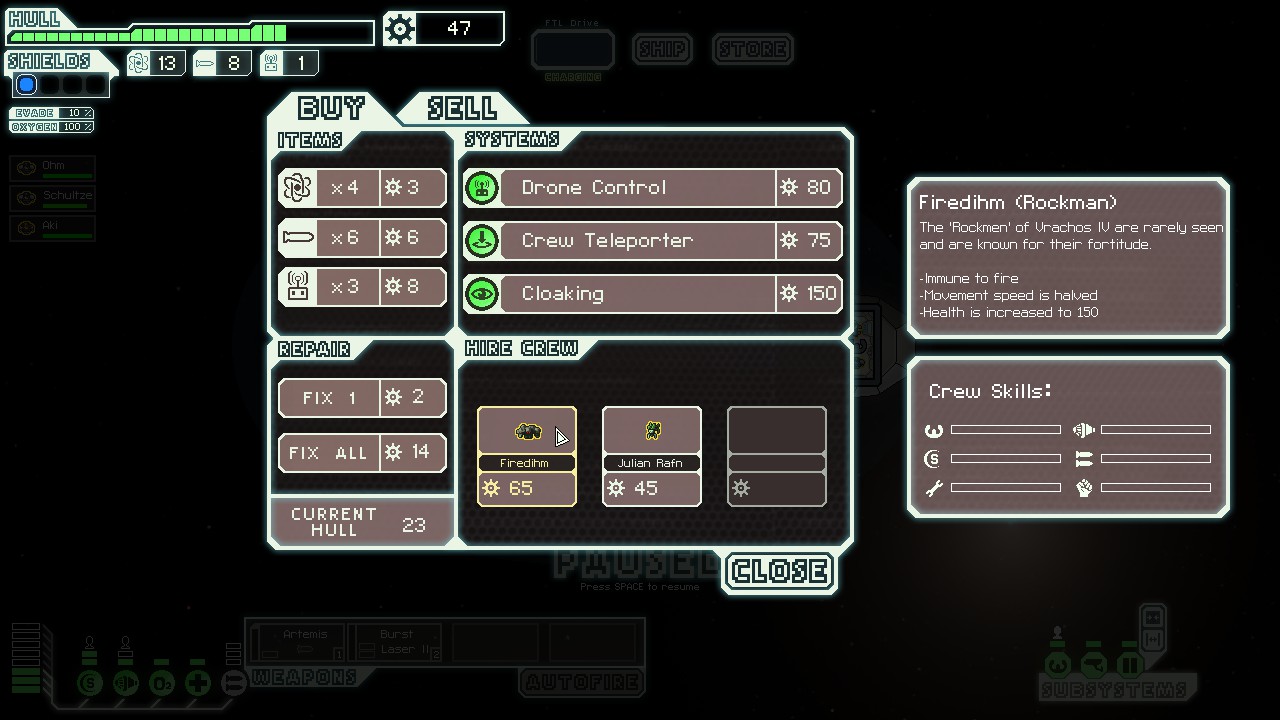
The shop is just one of many things that add to the game’s variety and strategy
Where the game truly shines, however, is the combat system. FTL’s simple interface hides an ocean of depth beneath its surface, and once you find yourself in combat you’ll need to exercise every tactical muscle in your brain.
Your ship has a finite – but upgradeable – amount of power, and you must distribute this power across all your ship’s systems to suit your current situation. Crew all OK? Divert power from the med bay to power the engines. Don’t need your FTL drive to charge so fast? Use some engine power to fire more weapons at once. It’s a great system that rewards players for patience and resource management, rather than dexterity. You can press pause at any time and issue commands, queue up the activation of weapons & doors, and manage power too.
Battles can get very hectic, but remain fun. Frantically trying to repair the oxygen bay with one man while another tries to get the engines working again, desperately clinging on to what life you have left so you can jump in time sets your heart racing. It’s immensely rewarding when you make that escape, or fire that crucial final laser bolt onto the enemy ship’s captain, giving you time to take a breather, look at the damage, get everything repaired and make your next jump.
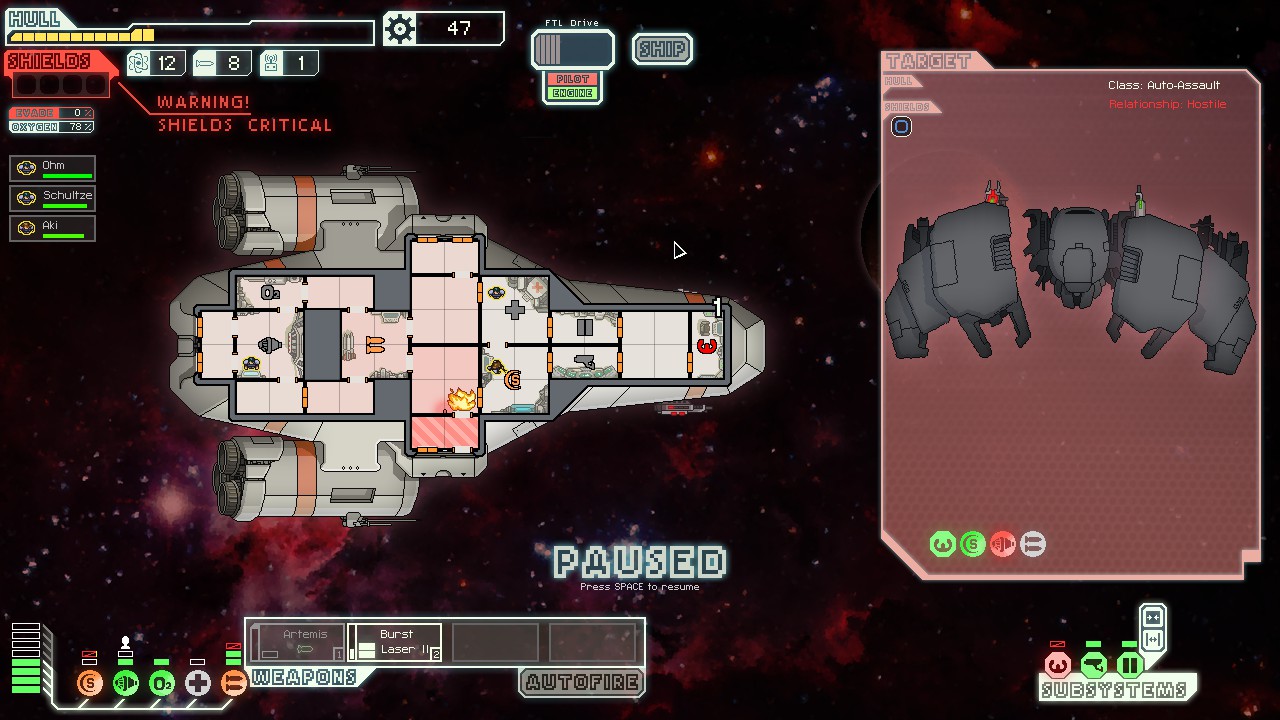
Pausing during gameplay allows you to make those split-second decisions in as much time as you like
The short bursts of jump-to-jump gameplay make the game very addicting, with each time you die – and you will – only serving to deepen your resolve to progress further. Since it’s all random, your skill as a captain will improve – rather than your ability to remember a route – encouraging long-term play. It’s possible to sink hours and hours into this game and not see everything the developers programmed for it, making replay value potentially limitless.
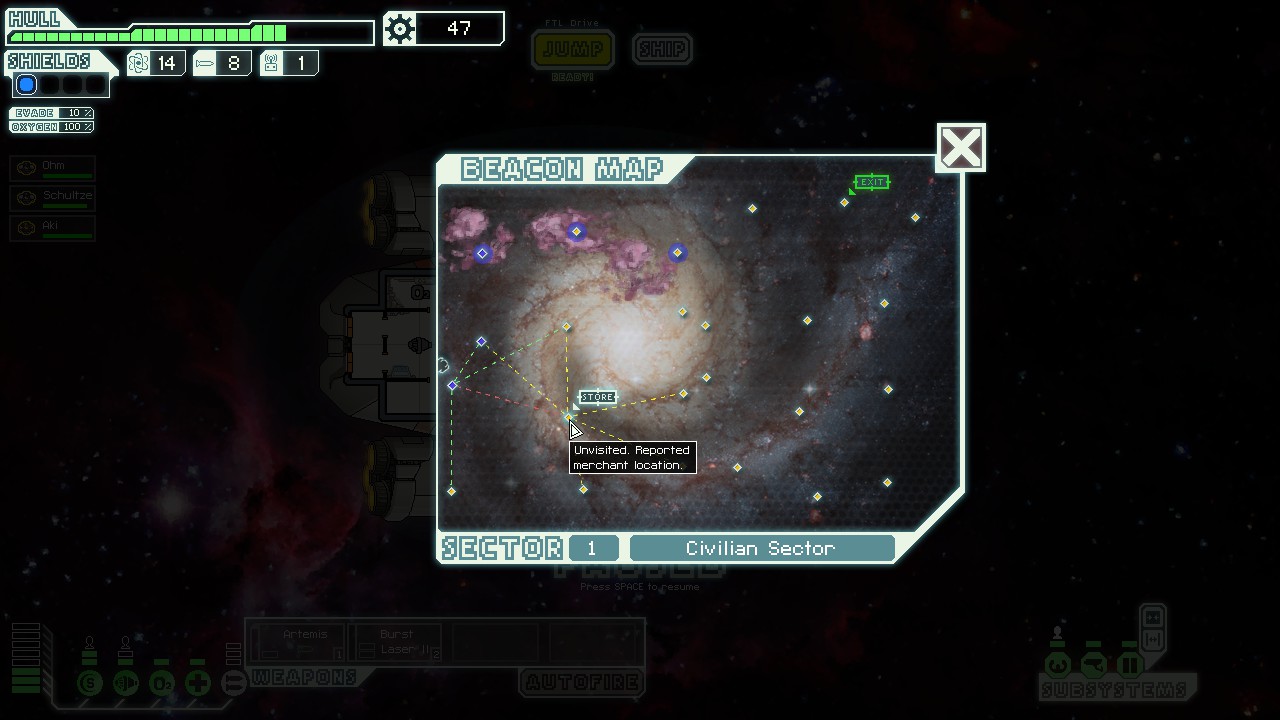
Each dot is a new scenario for you to jump to – and this is only Sector 1
FTL is not without its problems, however. Sometimes it can be very overwhelming in the midst of battle, and one annoying thing is how chain reactions can lead to situations whereby you could easily win the fight, but can do nothing apart from wait to die or try in vain to get something repaired. For example, you might jump into an area too close to a star you couldn’t possibly have prepared for and a solar flare might destroy your engines or cause a fire. This is while that unmanned, incredibly easy-to-destroy Auto Scout just gets a lucky shot on your doors system – which stops you from opening doors on the ship so crew members can’t get around – literally rendering you unable to do anything about the problem. And there lies the issue, luck plays such a big part that, while exciting, sometimes punishes players for no real reason.
The randomness may seem a draw to some and a turn-off to others. The game is still highly recommended despite the very hardcore luck-based nature of its design, as the world of FTL is still a very big and curious place to inhabit. FTL is rewarding for those who persevere with its draconian approach to death and design. For everyone else, the music, settings and stories will keep you wanting come back to the galaxy for more.
